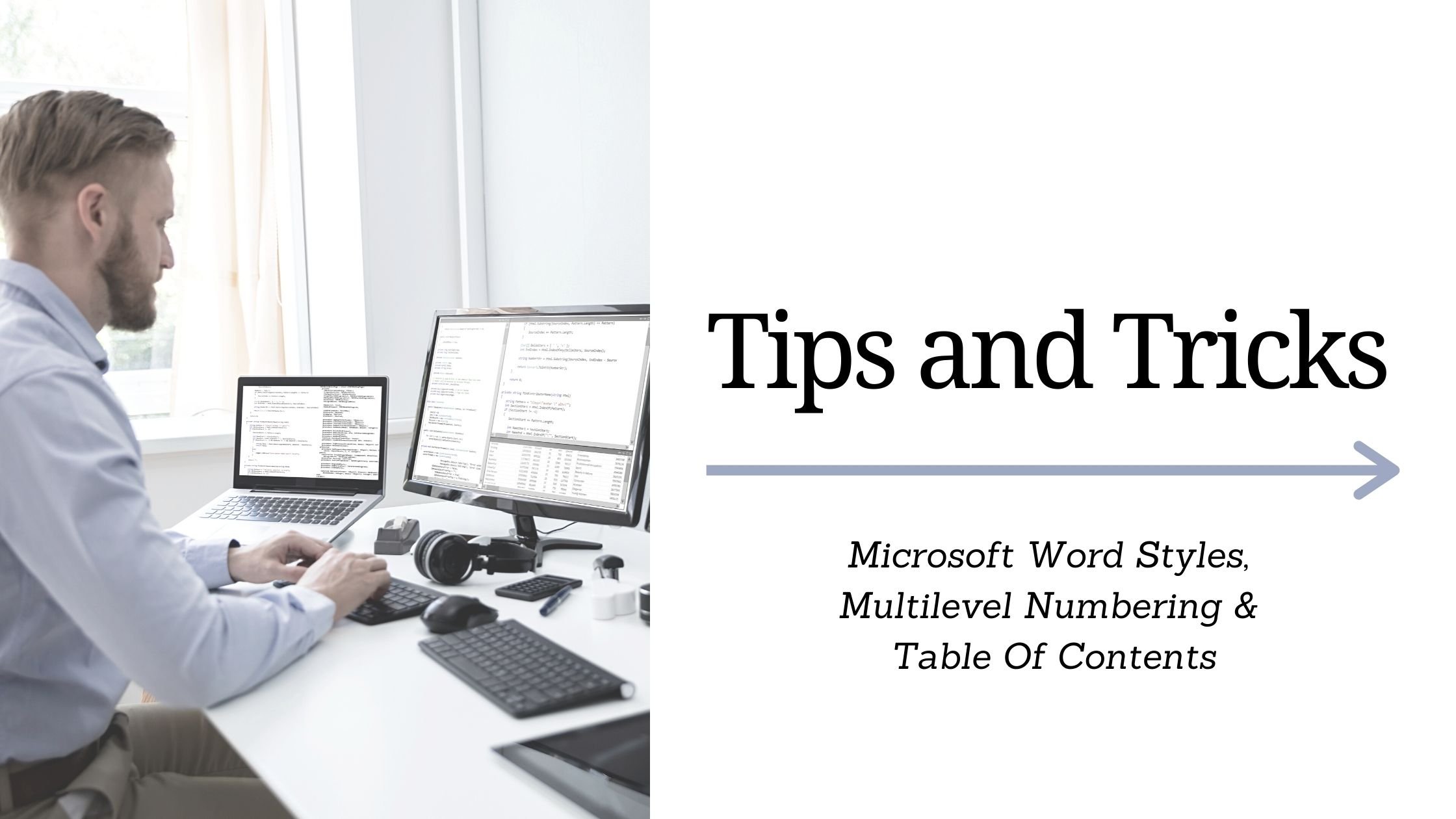Afinety University Tips & Tricks Webinar Series is designed for attorneys, paralegals, and legal assistants who would like to develop their skills in Microsoft Word and other common law firm software programs. Instructor Diana Baker, Afinety’s Macro Developer and Trainer, has over 20 years of experience working in the legal field and demonstrates easy tools to increase your efficiency in her webinars. This month’s webinar focused on how to format a pleading using Heading Styles and Multilevel Numbering, as well as generate a Table of Contents with a click of a button. We’ve highlighted some of the key takeaways below, but you can access the full webinar here.
Styles
Styles are a collection of formatting instructions which greatly enhance document automation and production. To get started with Styles, open the Styles Pane which will list styles contained in the document. Users can apply, modify or create new styles from the Styles Pane.
A user can preview styles by ticking the “Show Preview” box located near the bottom of the Styles Pane. Additional options for viewing the Styles Pane include the choice to show styles in the current document and sort the list of styles alphabetically or as recommended. Additionally, it is recommended to remove paragraph, font and bullet formatting from displaying in Styles Pane.
When creating new styles, it is best to start from scratch and base styles on “normal” and then build out each style by formatting the font and paragraph settings, and other preferences. When setting line spacing in a pleading document, one important tip is to set the spacing to Exactly 24 points (for double spacing) or Exactly 12 points (for single spacing) so the line spacing of the text of the pleading matches the line spacing used in the line numbering embedded in the header. A tip for Heading styles is to select “keep with next paragraph” and “keep lines together” in order to keep headings from appearing as the last line of text on a page.
Style Area
Instead of viewing Styles in a pane, users have the option to view in Style Area. To set up this feature, go to the File tab, Options, Advanced, Display, bringing you to the option “Style area pane width in Draft and Outline views” – insert a measurement like 0.7.” To see the Style Area in the left margin, you must be in Draft or Outline View.
Creating your own Style
To create a new Style in Microsoft Word, go to Styles Pane and select “A+ New Style”. From there, fill in the details, such as naming the style, select the style type as paragraph, style based on normal, and style for following paragraph. Then format the font, paragraph settings, and more.
Multilevel Numbering
To begin working with multilevel numbering, select the Multilevel List drop down located in the paragraph group in the Home ribbon. From the List Library, select a list that closely resembles the type of multilevel numbering you want to add to your Heading styles. Open the Multilevel list drop down again, and choose Define New List Style. Name the List Style, click Format and choose Numbering. Format each level of numbering and link to the respective Heading style. Be sure to watch the video for more details on formatting multilevel list numbering.
Table of Contents
If you applied heading styles to all headings throughout your document, you can generate a Table of Contents with a click of a button. Place your cursor in the exact spot where you want to insert the Table of Contents, from the References ribbon, click the drop down in the Table of Contents button, and choose Custom Table Contents. Users have the option to change the formatting of table of contents, by selecting and modifying “TOC Styles”. As a reminder, the “use hyperlinks” setting is turned on by default. Click OK to generate the Table of Contents.
Moving Forward
You can easily add the styles you create or modify into the template the document is attached to, so you have access to these styles in new documents moving forward. When modifying or creating the style, tick the “new documents based on this template” box. Another tip Baker mentioned was, do not select the “automatically update” button for styles because anytime direct formatting is applied to a word or paragraph, that formatting will be added to the style that word or paragraph is in.
For additional tips and tricks on the software programs you use most, register for an upcoming webinar.
